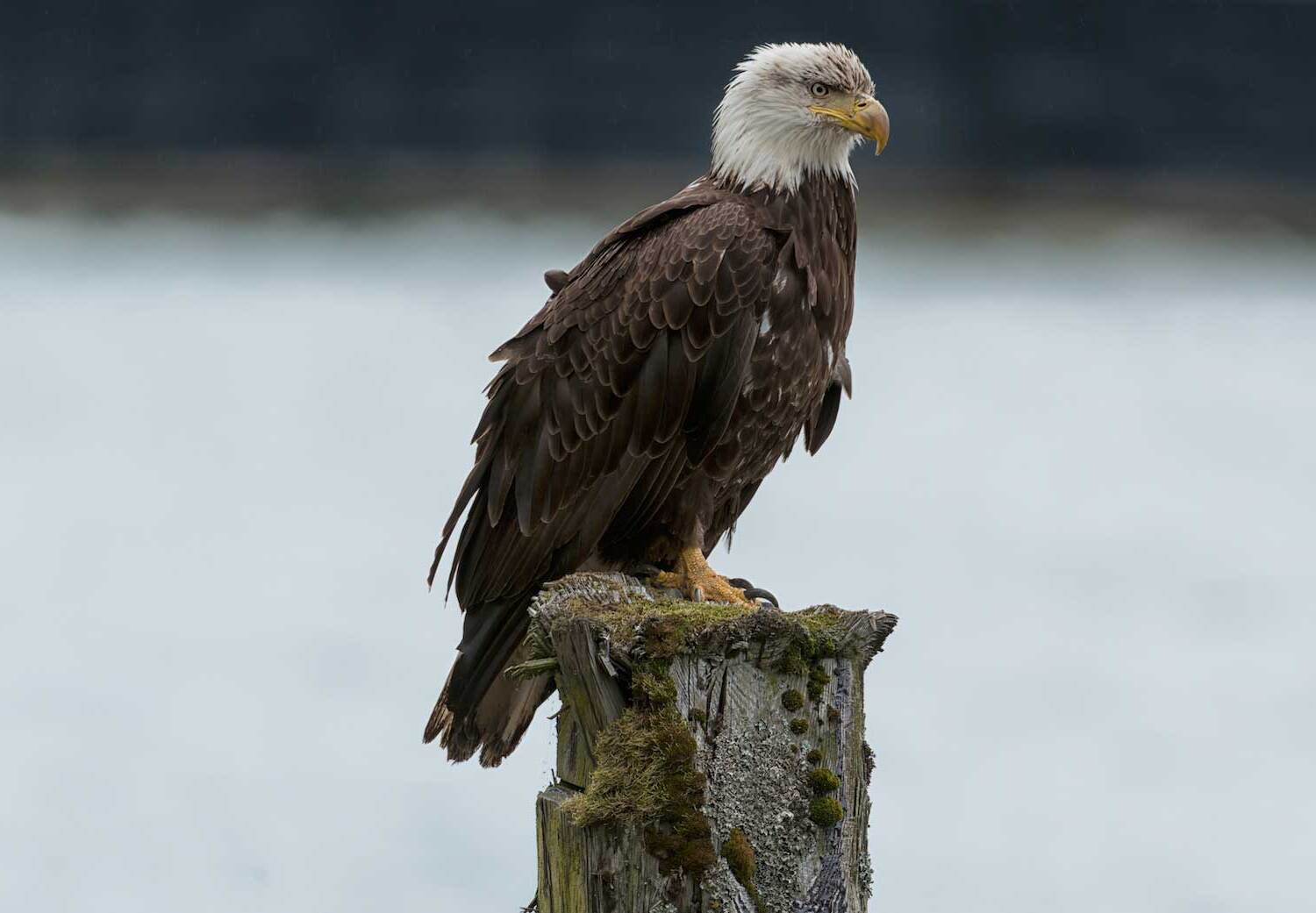
Bald eagles are more than just a symbol of freedom and strength in the United States. Did you know that bald eagles aren't actually bald? Their name comes from an old English word, "piebald," meaning white-headed. These majestic birds boast a wingspan of up to 7.5 feet, making them one of the largest raptors in North America. They can spot prey from over a mile away thanks to their incredible eyesight. Bald eagles build the largest nests of any bird in North America, sometimes weighing over a ton! These nests, called eyries, are often reused and added to each year. Bald eagles primarily eat fish but are opportunistic feeders, meaning they'll eat whatever is available. Once endangered, their population has rebounded due to conservation efforts.
Majestic Birds of Prey
Bald eagles are among the most iconic birds in North America. Known for their striking appearance and powerful presence, these birds have fascinated humans for centuries. Here are some intriguing facts about these majestic creatures.
-
Bald eagles are not actually bald. Their name comes from an old English word, "balde," meaning white, referring to their white head feathers.
-
They are the national bird and symbol of the United States, chosen for their long life, great strength, and majestic looks.
-
Adult bald eagles have a wingspan of up to 7.5 feet, making them one of the largest birds of prey in North America.
-
These birds can live up to 20-30 years in the wild, with some even reaching 50 years in captivity.
-
Bald eagles build the largest nests of any North American bird, with some nests weighing up to a ton and measuring 13 feet deep.
Hunting and Diet
Bald eagles are skilled hunters with a varied diet. Their hunting techniques and food preferences are fascinating aspects of their behavior.
-
They primarily eat fish, which they catch with their sharp talons. They are known to swoop down and snatch fish from the water with incredible precision.
-
Bald eagles are opportunistic feeders and will also eat birds, small mammals, and carrion if fish are scarce.
-
They have excellent eyesight, allowing them to spot prey from a mile away. Their vision is four to five times better than that of a human.
-
These birds can fly at speeds of up to 30 miles per hour and dive at speeds of up to 100 miles per hour when hunting.
-
Bald eagles often steal food from other birds, such as ospreys, showcasing their opportunistic nature.
Reproduction and Family Life
The family life of bald eagles is complex and fascinating. Their mating rituals and parenting skills are worth noting.
-
Bald eagles mate for life, forming strong pair bonds that last until one of the partners dies.
-
They perform elaborate courtship displays, including aerial acrobatics and synchronized flying.
-
Both parents take turns incubating the eggs, which usually number between one and three per clutch.
-
Eagle chicks, known as eaglets, are born covered in white down and are completely dependent on their parents for food and protection.
-
Eaglets fledge, or leave the nest, at around 10-12 weeks old but continue to rely on their parents for food for several more weeks.
Conservation and Population
Bald eagles have faced numerous challenges over the years. Their conservation story is one of success and ongoing vigilance.
-
Bald eagle populations declined dramatically in the 20th century due to habitat destruction, hunting, and the use of pesticides like DDT.
-
The species was listed as endangered in the United States in 1967, leading to significant conservation efforts.
-
Thanks to these efforts, including the banning of DDT and habitat protection, bald eagle populations have rebounded. They were removed from the endangered species list in 2007.
-
Today, there are an estimated 70,000 bald eagles in North America, with the majority residing in Alaska and Canada.
-
Bald eagles are protected under the Bald and Golden Eagle Protection Act, which prohibits the killing, selling, or possessing of eagles, their nests, or their eggs.
-
Public awareness and education continue to play a crucial role in ensuring the ongoing protection and conservation of bald eagles.
The Majesty of Bald Eagles
Bald eagles are more than just a symbol of freedom. Their impressive wingspan, keen eyesight, and powerful hunting skills make them fascinating creatures. These birds of prey can spot a fish from miles away and dive at speeds up to 100 mph. They build massive nests, sometimes weighing over a ton, and mate for life. Bald eagles have made a remarkable comeback from the brink of extinction, thanks to conservation efforts. Their presence in the wild is a testament to nature's resilience. Next time you see one soaring high, remember the incredible journey these birds have taken. From their unique courtship rituals to their role in the ecosystem, bald eagles continue to captivate and inspire. Keep an eye out for these majestic birds, and appreciate the wild beauty they bring to our world.
Was this page helpful?
Our commitment to delivering trustworthy and engaging content is at the heart of what we do. Each fact on our site is contributed by real users like you, bringing a wealth of diverse insights and information. To ensure the highest standards of accuracy and reliability, our dedicated editors meticulously review each submission. This process guarantees that the facts we share are not only fascinating but also credible. Trust in our commitment to quality and authenticity as you explore and learn with us.


